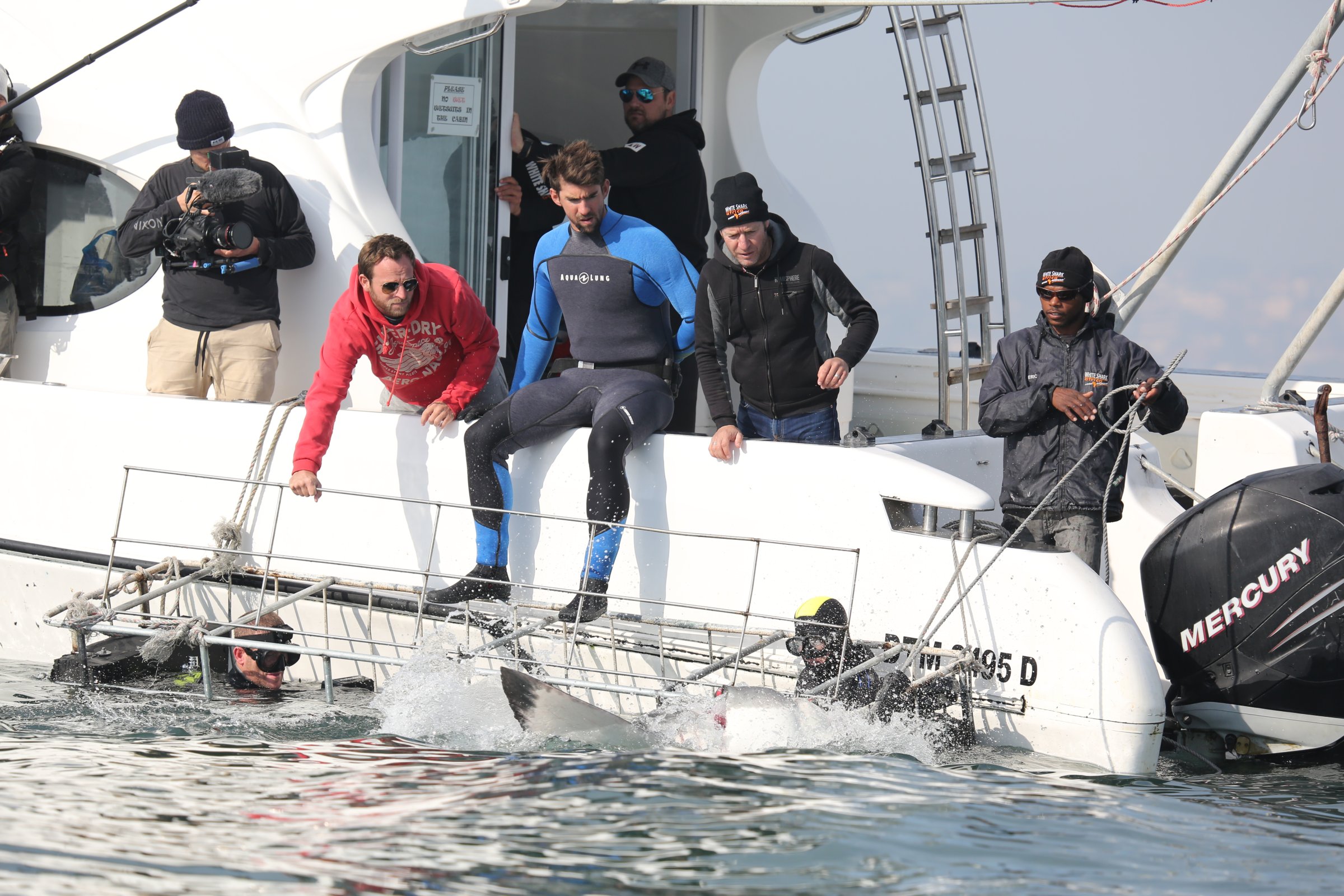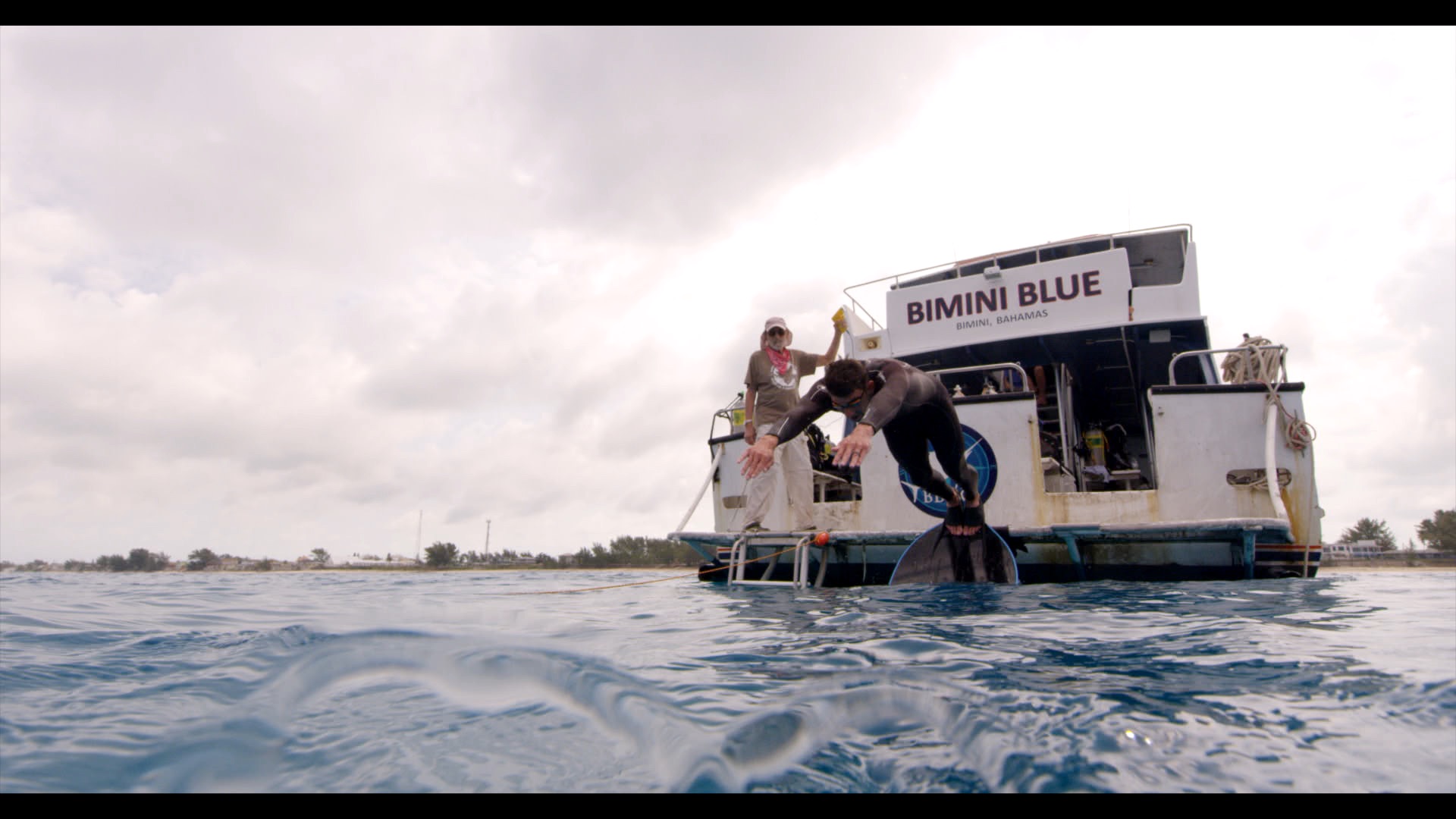
The fastest swimmer in the pool faces off against the fastest creature in the deep: that’s the conceit behind the latest Shark Week stunt, airing July 23 on Discovery, in which 23-time Olympic gold medalist Michael Phelps tests his prodigious aquatic skills against the streamlined speed of the greatest underwater predator of all.
But his interest in sharks isn’t just about proving an athletic point.
“I’m a massive geek when it comes to sharks,” he tells TIME. “Just being able to see a handful of species of sharks out of the over 500 sharks we have in the world — that just really excited me.”
Phelps worked with the Shark Week team to cage-dive with sharks, learn about the species from experts and execute an open-water “race,” in which the swimmer took to the blue waters of the Bahamas to test his speed against the normal cruising pace of his marine competitors.
For maybe the first time ever in a swimming match, Phelps found himself at a physical disadvantage: a Great White on the hunt can hit speeds nearly five times as fast as Phelps’s medal-winning sprints. But with the addition of a mermaid-like monofin and specially designed wetsuit, he put on his game face and gave it his best shot. (You’ll have to tune in to Shark Week to find out who won.) Here, he explains why he decided to get out of the pool and into the ocean — and why sharks deserve our respect, not our fear.
TIME: Are you used to swimming in the ocean or being around sharks?
Michael Phelps: I’m normally not swimming in a body of water unless it has a black line on the bottom. So it was different. But I spend so much time in the water, it’s easy for me and calming for me. I wanted to get in the water with these animals and be a massive nerd about it. Sharks are some of the biggest predators that we have in the ocean, so being able to learn about them and swim with them is something that’s always been a dream of mine, and the opportunity with Shark Week was a dream come true.
Walk us through the process of putting on the race. How did you measure yourself against them?
A Great White can swim up to 25 miles per hour on a burst, and casually swims six to seven miles an hour. Or you have a hammerhead that can swim up to 15 miles an hour. When you think about my max speed in a race, which is about five and a half miles an hour, it’s tough to compete against that speed. So we had to make some changes. I was able to have a fin — a monofin. That helped me make the race a little bit closer. We weren’t side by side. When a Great White bursts at the surface, that’s their mechanism for obviously attacking and for getting food, so that’s not a normal speed that they swim at. [The scientists] were calculating the speed they could potentially swim in a straight line.
How did you prepare?
We had a bunch of practice in a pool testing out the monofin and trying to see what the fastest way for me to move underwater was, whether it was swimming on my back, on my side, on my stomach. The race was obviously done in the open water — we did not put a shark in the water [laughs].
What was the biggest takeaway from your time spent hanging out with shark experts?
I think the biggest thing is to get the message across that they don’t want to eat us. They’re not trying to kill us and trying to hurt us. They’re out there surviving just like we are on land. Hopefully with some of the lessons that I’ve learned and the do’s and don’ts in the shark world, hopefully people can learn and hopefully people can be able to swim free with the sharks.
Are you going to be spending more time in the ocean, now that you’ve done this training? Or will you stick to pools?
I swim once or twice a week. For me, it’s an escape to relax a little bit and be in my own world. I would like to learn more about what we have in the ocean. Water is a part of my life, and will be a part of my life forever. Whether it’s conservation of water, whether it’s conserving wildlife, I know there are a lot of people that are killing sharks out there, and we need to stop that. There are a lot of things that I still want to do, and even though I’m not competing anymore, I’m still going to be involved in water in a lot of different capacities.



More Must-Reads from TIME
- Donald Trump Is TIME's 2024 Person of the Year
- Why We Chose Trump as Person of the Year
- Is Intermittent Fasting Good or Bad for You?
- The 100 Must-Read Books of 2024
- The 20 Best Christmas TV Episodes
- Column: If Optimism Feels Ridiculous Now, Try Hope
- The Future of Climate Action Is Trade Policy
- Merle Bombardieri Is Helping People Make the Baby Decision
Write to Raisa Bruner at raisa.bruner@time.com